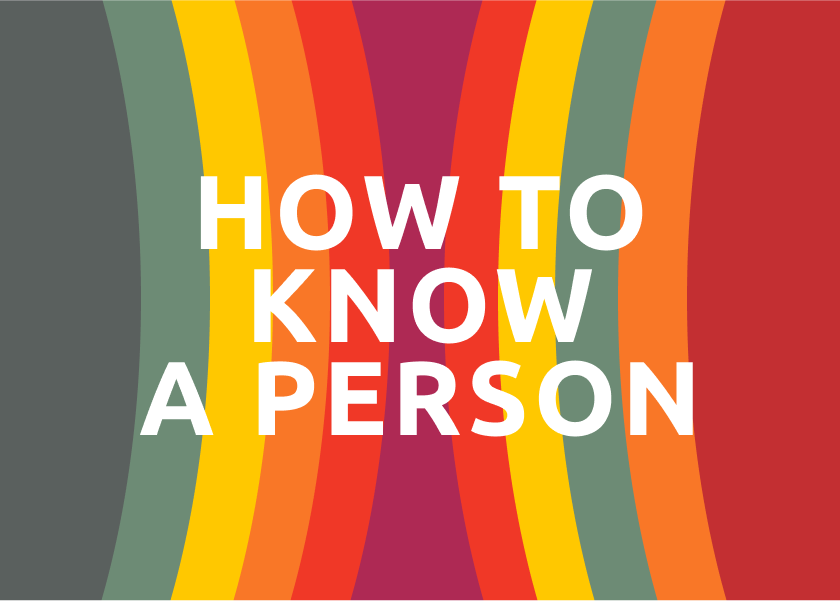Talking to Strangers by Malcolm Gladwell - Summary
Why do we misread strangers, with dire consequences? Explore chilling encounters, from spies to traffic stops, uncovering our flawed assumptions. Discover the "default to truth" and how it shapes our world. This is s crucial, eye-opening read.

The following is a summary and review of the book Talking to Strangers by Malcolm Gladwell.
Why We Misunderstand Those We Don't Know
Have you ever felt utterly baffled by someone's actions, unable to fathom their motivations or intentions? Do misunderstandings with people you've just met sometimes spiral into regrettable outcomes? In his thought-provoking 2019 bestseller, Talking to Strangers, Malcolm Gladwell delves into the complexities of human interaction when we encounter those outside our familiar circles. Through compelling case studies and insightful analysis, Gladwell explores why we so often misinterpret strangers, with consequences ranging from minor awkwardness to profound tragedy.
Talking to Strangers has resonated with a wide audience due to its exploration of universal human experiences and its knack for illuminating hidden biases in our perceptions.
Table of Contents
- About the Author
- Who Should Read This Book?
- Key Insights and Themes
- Detailed Summary
- Review
- Actionable Takeaways
- FAQs
- Conclusion
About the Author
Malcolm Gladwell is a renowned author and journalist known for his ability to synthesise complex social science research into engaging narratives. He is the author of five previous New York Times bestsellers: The Tipping Point, Blink (summary), Outliers, What the Dog Saw, and David and Goliath. Gladwell is also the host of the popular podcast Revisionist History and a staff writer at The New Yorker. His work often examines the intricacies of human behaviour and societal trends, making him a highly influential voice in contemporary thought. Born in England and raised in rural Ontario, he now resides in New York.
Who Should Read This Book?
Talking to Strangers is a valuable read for anyone interested in understanding the nuances of human communication and perception, particularly when interacting with those they don't know. This includes:
- Professionals in fields requiring interpersonal interaction: This could range from law enforcement and educators to business leaders and diplomats. The book offers insights into potential pitfalls in assessing trustworthiness and understanding intentions.
- Individuals seeking to improve their communication skills: By highlighting common biases and misunderstandings, the book encourages more thoughtful and cautious interactions with new acquaintances.
- Anyone fascinated by psychology and human behaviour: Gladwell masterfully weaves together research and real-world examples to explore fundamental aspects of how we perceive and judge others.
- Readers interested in social justice issues: The book examines how misinterpretations can have particularly severe consequences in interactions between different social groups, as seen in the case of Sandra Bland.
Key Insights and Themes
Here are some of the key takeaways and main ideas explored in Talking to Strangers:
- Default to Truth: Humans tend to operate with a "default to truth," meaning we generally believe what others tell us until we have compelling evidence to the contrary. This can make us vulnerable to deception.
- Transparency: We often assume that people's inner feelings and intentions are transparent and can be easily read through their behaviour. However, this assumption is frequently flawed, as what we see on the surface doesn't always reflect what's happening internally.
- Coupling: The book explores the concept of "coupling," where people's behaviour is tightly linked to their environment or specific circumstances. When we remove individuals from their familiar context, their behaviour can become unpredictable and harder to interpret.
- The Challenge of Understanding Context: Effectively understanding strangers requires considering their background, culture, and the specific situation in which the interaction occurs. Failing to account for context can lead to significant misjudgements.
- Asymmetry of Insight: We often believe we know others better than they know us, a phenomenon Gladwell refers to as the "illusion of asymmetric insight". This can hinder effective communication and create misunderstandings.
- The Limits of "Reading" People: The book challenges the notion that we can reliably detect lies or true intentions based on nonverbal cues or gut feelings, referencing the debate between Paul Ekman and Tim Levine.
- The Dangers of Snap Judgements: Gladwell demonstrates how quick decisions about strangers, often based on limited information and ingrained biases, can have devastating consequences.
Detailed Summary
Introduction: “Step out of the car!”
Gladwell begins by recounting the tragic story of Sandra Bland, a young African American woman who was pulled over for a minor traffic violation in Texas and three days later was found dead in her jail cell. Through this case, Gladwell introduces the central theme of the book: how misunderstandings between strangers can have catastrophic outcomes, highlighting the flawed assumptions and biases that often shape these interactions. Bland's vibrant personality, evident in her "Sandy Speaks" YouTube videos, contrasts starkly with the narrative presented during and after her arrest, illustrating the difficulty of truly perceiving a stranger's character and intentions in a brief encounter.
Part One: Spies and Diplomats: Two Puzzles
1. Fidel Castro’s Revenge
This chapter examines the case of Ana Montes, a highly effective Cuban spy who infiltrated the US Defence Intelligence Agency for years. Despite working closely with her American colleagues, her true allegiance remained undetected. Gladwell uses this example to illustrate the power of the "default to truth" – Montes's colleagues generally believed her and overlooked subtle signs that might have indicated her deception. Her controlled demeanour and unusual habits were often rationalised away, highlighting our tendency to accept seemingly plausible explanations rather than suspect duplicity.
2. Getting to Know der Führer
Gladwell then shifts to the historical context of British Prime Minister Neville Chamberlain's interactions with Adolf Hitler in the lead-up to World War II. Chamberlain, like many others who met Hitler, initially believed he could be reasoned with and trusted his assurances. This chapter explores how even intelligent and experienced individuals can be profoundly wrong in their assessment of a stranger's character, particularly when influenced by their own hopes and desires. Gladwell suggests that face-to-face interactions don't always lead to greater accuracy in judging someone's intentions and can even reinforce existing biases or the default to truth.
Part Two: Default to Truth
3. The Queen of Cuba
Returning to the story of Ana Montes, Gladwell further elaborates on how the "default to truth" allowed her to maintain her cover for so long. Her colleagues, operating under the assumption that she was loyal, failed to recognise or properly interpret inconsistencies in her behaviour. This chapter reinforces the idea that our inherent trust in others can be a significant vulnerability, especially when dealing with skilled deceivers.
4. The Holy Fool
This chapter focuses on the story of Bernard Madoff and his massive Ponzi scheme. Gladwell examines why so many intelligent investors and regulators failed to recognise the fraud despite numerous red flags. He argues that Madoff's seemingly unassuming and respectable persona, coupled with the desire to believe in the high returns he promised, led people to overlook glaring inconsistencies. The "default to truth" and the difficulty of questioning someone's integrity, especially when they appear credible, played a significant role in the scheme's longevity. Harry Markopolos, who repeatedly tried to expose Madoff, faced widespread disbelief, highlighting the uphill battle of challenging the prevailing "truth".
5. Case Study: The Boy in the Shower
Gladwell then turns to the Jerry Sandusky child sexual abuse scandal at Penn State University. He analyses why allegations against Sandusky were not taken seriously for years, despite multiple individuals having concerns. Gladwell suggests that Sandusky's public image as a benevolent figure dedicated to underprivileged children, his "human side" and "engaging, lopsided grin of modesty", created a strong "default to truth" that made it difficult for people to believe the accusations. The desire to see him as a "holy fool" doing good work without public recognition blinded many to the potential for harm. The delayed reporting by Mike McQueary, who witnessed an incident, is presented as a potential example of the internal conflict arising from this clash between the perceived truth of Sandusky's character and the disturbing reality he witnessed.
Part Three: Transparency
6. The Friends Fallacy
This chapter explores the concept of transparency, the idea that we can easily read other people's emotions and intentions. Gladwell uses the popular television show Friends as an example of how we are often presented with an unrealistic view of human transparency, where characters' feelings are readily apparent. He contrasts this with the reality that strangers' inner states are often opaque to us, and we are prone to misinterpreting their behaviour based on our own assumptions and biases. The research of Sergio Jarillo and Carlos Crivelli, who challenged the universality of facial expressions identified by Paul Ekman, further supports the idea that accurately "reading" strangers is far more complex than we often assume.
7. A (Short) Explanation of the Amanda Knox Case
Gladwell examines the highly publicised case of Amanda Knox, an American student accused of murdering her roommate in Italy. He argues that Knox was largely judged based on her perceived lack of appropriate emotional responses to the tragedy, leading many to assume her guilt. Gladwell suggests that Knox's behaviour, which some interpreted as cold and suspicious, might have been a result of her personality, cultural differences, or simply a manifestation of stress and trauma. This case highlights the dangers of equating outward behaviour with inner guilt or innocence, and how our flawed assumptions about transparency can lead to wrongful accusations and convictions. The amplified DNA evidence and borderline interpretations also contributed to the ambiguity of the case.
8. Case Study: The Fraternity Party
This chapter delves into the case of Brock Turner, a Stanford University swimmer convicted of sexual assault. Gladwell analyses the differing accounts of the events leading up to the assault, focusing on the role of alcohol and the difficulties in interpreting the intentions and levels of consent of individuals who are intoxicated. The chapter explores the phenomenon of alcohol-induced blackouts and how they can impair memory and perception, making it challenging to ascertain what truly happened during an encounter. The legal complexities surrounding consent and intoxication are also discussed, highlighting the ambiguity that can arise in interactions between strangers under the influence. The case of R v Bree further illustrates the legal nuances of consent and capacity when alcohol is involved.
Part Four: Lessons
9. KSM: What Happens When the Stranger Is a Terrorist?
Gladwell shifts to the context of terrorism and the interrogation of Khalid Sheikh Mohammed (KSM), the alleged mastermind of the 9/11 attacks. He examines the CIA's use of enhanced interrogation techniques, arguing that these methods are not only ethically questionable but also ineffective in eliciting reliable information. Under extreme stress and duress, individuals are more likely to say what their interrogators want to hear, regardless of its truthfulness. The chapter highlights how our desire for transparency and the belief that we can extract truth through force can lead to flawed intelligence and counterproductive outcomes. Studies on the impact of stress on memory and cognitive function, such as those involving the Rey-Osterrieth figure, further support the argument against coercive interrogation methods.
Part Five: Coupling
10. Sylvia Plath
This chapter explores the tragic suicide of the poet Sylvia Plath. Gladwell analyses the factors that might have contributed to her decision, including her personal struggles and the societal context of suicide at the time. He discusses the shift from toxic town gas to natural gas in the UK and its impact on suicide rates, illustrating the concept of coupling – how individuals' actions can be linked to the availability and characteristics of their environment. The reduction in suicide rates after the change in gas composition suggests that altering the means can sometimes prevent suicides, challenging the idea that individuals determined to take their own life will always find another way. The ongoing debate surrounding suicide barriers on the Golden Gate Bridge further exemplifies this point.
11. Case Study: The Kansas City Experiments
Gladwell examines the Kansas City Preventive Patrol Experiment and the Kansas City Gun Experiment to illustrate how policing strategies based on flawed assumptions about crime and communities can be ineffective or even counterproductive. The Preventive Patrol Experiment showed that increasing or decreasing routine police patrols had no significant impact on crime rates. The Gun Experiment, which focused on targeted gun seizures in a specific high-crime area, did show a reduction in gun-related offences within that zone. However, Gladwell highlights the complexities of policing and the importance of understanding the specific dynamics of different communities, referencing the concept of crime concentration in "hot spots". Claire White's work in Baltimore demonstrates how easily one can misjudge a street based on superficial appearances, underscoring the need for deeper contextual understanding.
12. Sandra Bland
Returning to the case of Sandra Bland, Gladwell offers a more nuanced analysis of her traffic stop and subsequent death. He examines the interaction between Bland and the arresting officer, Brian Encinia, highlighting how Encinia's approach, influenced by tactics advocated in police training manuals, escalated a minor traffic stop into a confrontational situation. Gladwell critiques the emphasis on detecting deception and eliciting compliance, arguing that these approaches can create unnecessary tension and misinterpretations, especially in interactions between individuals from different backgrounds and with different perspectives. The asymmetry of insight is evident in Encinia's perception of Bland as a threat, while Bland likely perceived his actions as unwarranted and aggressive. The chapter underscores the tragic consequences of failing to understand the stranger and the power dynamics inherent in such encounters.
Review
Talking to Strangers is a compelling and thought-provoking exploration of why we so often misjudge those we don't know. Gladwell's signature storytelling style, weaving together gripping narratives and social science research, makes complex ideas accessible and engaging. The book effectively highlights the inherent challenges in understanding strangers, revealing our reliance on flawed assumptions like the "default to truth" and the belief in transparency.
One of the book's strengths lies in its diverse range of case studies, from espionage and diplomacy to criminal justice and personal tragedy. These examples vividly illustrate the profound consequences that can arise from misunderstandings between strangers. Gladwell masterfully connects seemingly disparate events through his overarching themes, prompting readers to reconsider their own assumptions and biases in their interactions with others.
However, some critics might argue that Gladwell's analysis, while insightful, occasionally simplifies complex issues. The Notes section of the book indicates a substantial amount of research, yet the focus on narrative sometimes leaves room for alternative interpretations or a deeper dive into the nuances of the cited studies. Additionally, while the book effectively identifies problems in how we interact with strangers, some readers might desire more concrete solutions or strategies for improving these interactions beyond simply being aware of the pitfalls.
Despite these minor points, Talking to Strangers remains a crucial and timely book. It forces us to confront the limitations of our ability to understand those outside our familiar circles and to recognise the potential for misjudgement and its often devastating consequences.
Actionable Takeaways
Here’s how to apply these lessons in real life:
- Question Your "Default to Truth": Be mindful of your tendency to automatically believe what strangers tell you. While trust is important, consider the context and look for corroborating evidence when making important judgements.
- Recognise the Limits of Transparency: Avoid assuming you can easily read a stranger's emotions or intentions through their outward behaviour. Be aware that what you see might not accurately reflect their inner state.
- Consider the Context: Pay attention to the environment and circumstances surrounding an interaction with a stranger. Their behaviour might be influenced by factors you are unaware of.
- Be Aware of the Asymmetry of Insight: Acknowledge that you may not know a stranger as well as you think you do, and vice versa. Approach interactions with humility and a willingness to learn.
- Be Cautious with Snap Judgements: Resist the urge to form quick opinions about strangers based on limited information or superficial cues. Take the time to gather more information and consider alternative explanations.
- Embrace Nuance and Ambiguity: Understand that interactions with strangers can be complex and that clear-cut answers or easy interpretations are not always possible. Be comfortable with a degree of uncertainty.
- Focus on Empathetic Listening: When interacting with strangers, prioritise active listening and try to understand their perspective, even if it differs from your own.
- Recognise Systemic Biases: Be aware of how societal biases and stereotypes can influence your perceptions of strangers, particularly those from different social or cultural backgrounds.
FAQs
- What is "Talking to Strangers" about? "Talking to Strangers" explores why we often misunderstand people we don't know, examining the cognitive biases and flawed assumptions that shape our interactions and lead to misjudgements, sometimes with tragic consequences.
- Is "Talking to Strangers" worth reading? Yes, "Talking to Strangers" is a valuable read for anyone seeking to understand the complexities of human interaction and the potential pitfalls of judging those we don't know. Gladwell's engaging writing and insightful analysis offer crucial perspectives on communication, trust, and the biases that can affect our perceptions.
- What is the "default to truth" according to the book? The "default to truth" is the human tendency to generally believe what others tell us until we have compelling evidence to the contrary. This inherent trust can make us vulnerable to deception.
- What is "transparency" in the context of "Talking to Strangers"? In the book, "transparency" refers to the often-unfounded assumption that people's inner feelings and intentions are easily discernible through their outward behaviour. Gladwell argues that this belief is frequently flawed.
- What is "coupling" as discussed by Gladwell? "Coupling" refers to the idea that people's behaviour is often tightly linked to their specific environment or circumstances. When individuals are removed from their familiar context, their behaviour can become less predictable.
Conclusion
Talking to Strangers serves as a powerful reminder of the inherent difficulties in understanding those outside our immediate social circles. By illuminating the cognitive biases and flawed assumptions that often govern these interactions, Malcolm Gladwell encourages us to approach encounters with strangers with greater caution, humility, and a deeper awareness of the complexities involved. The book's compelling narratives and insightful analysis provide valuable lessons for navigating a world where interactions with the unfamiliar are increasingly common. By embracing the nuances of human communication and challenging our ingrained beliefs about transparency and the "default to truth," we can strive to bridge the gaps of misunderstanding and foster more meaningful and accurate connections with those we don't yet know.
As an Amazon Associate, ShelfHelp may earn money from qualifying purchases. Needless to say, ShelfHelp only includes affiliate links to books we recommend and think are worth your time reading.




